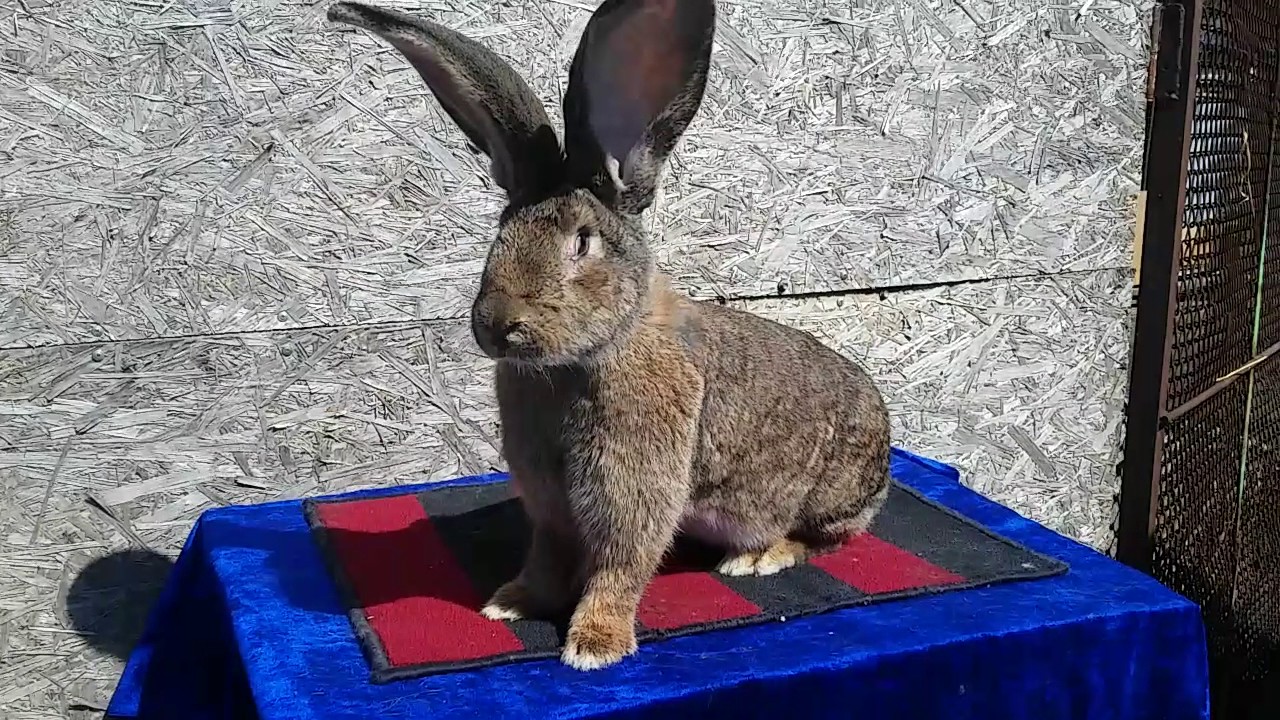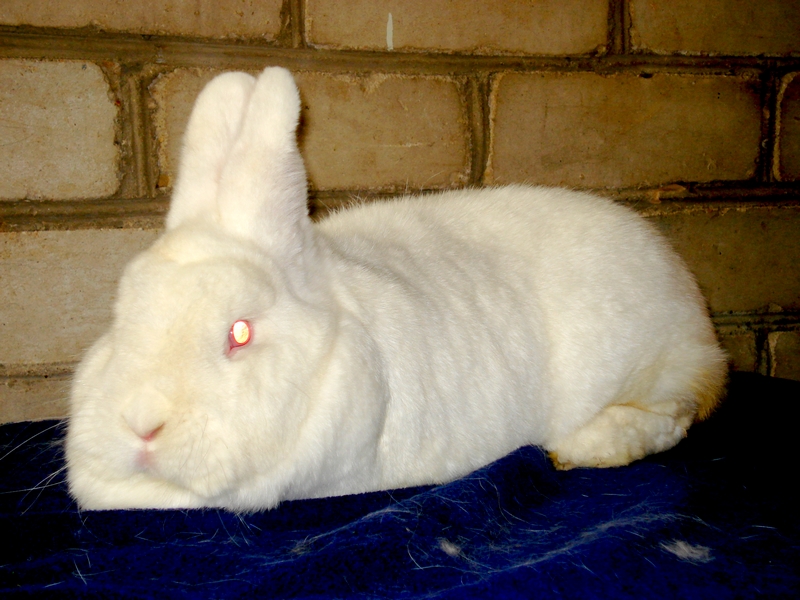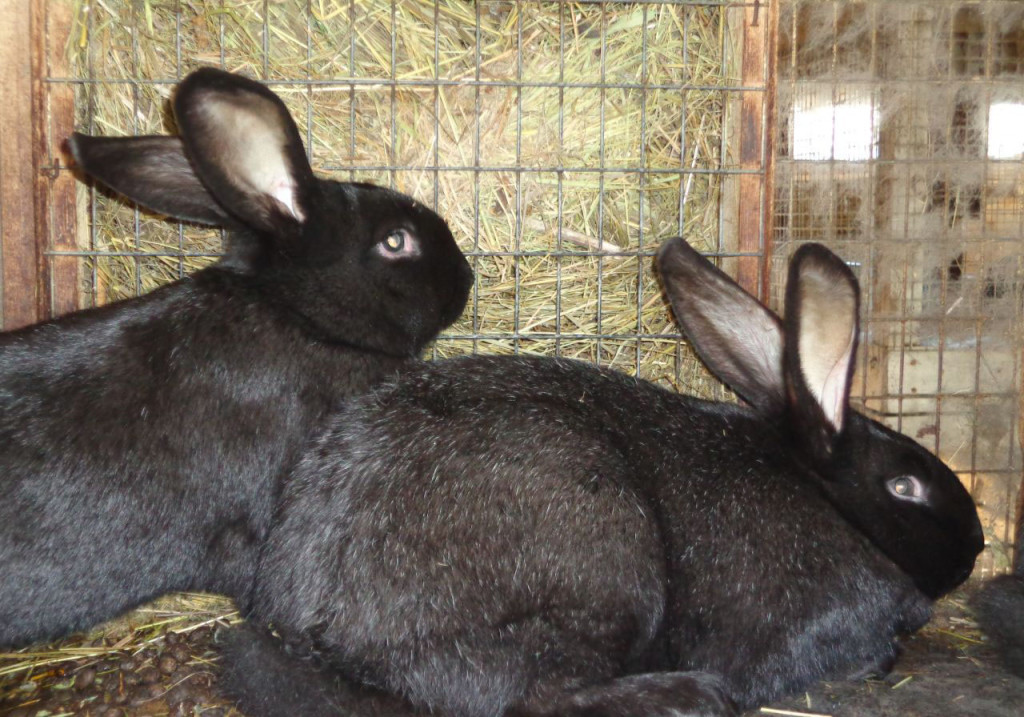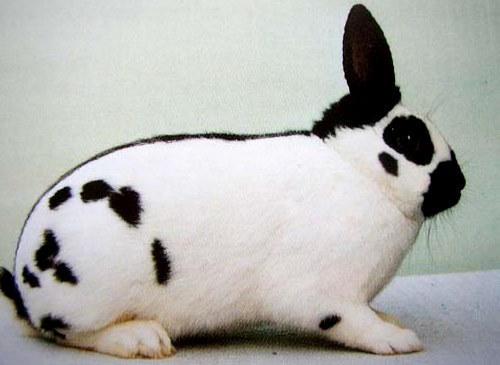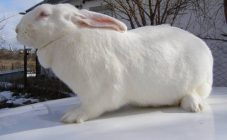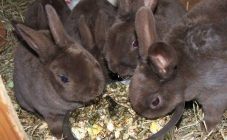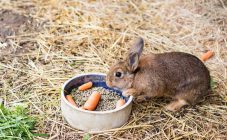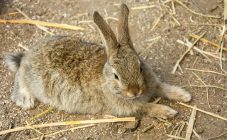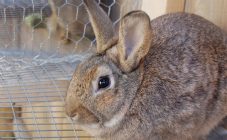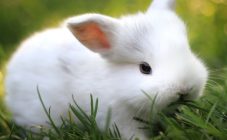Content:
Today, rabbits of different breeds surprise not only with their appearance. Everyone who decides to try their own hand at rabbit breeding can choose the most suitable breed for the subsequent production of meat, skins. But it must be borne in mind that the characteristics of the varieties of rabbits determine the state of health of the animals and the indicators of subsequent breeding.
Rabbit breeds for industrial use
For industrial purposes, it is important to know what the different rabbits are and what is required to breed them fully. This direction necessarily involves a careful study of all existing breeds and taking into account their main characteristics.
- German giant. This breed is the largest. Despite its impressive size, the rabbit has a pleasant appearance and can be used in industry and as a pet.
- Silver rabbit. Usually the weight is between 4.5 and 6.6 kg. Breeding them required selection of French Champagne rabbits. The fur of animals of this breed is silvery. Females and males grow large. In addition, they are appreciated for their excellent meat and beautiful skin.
- Soviet chinchilla. This large breed appeared due to crossing with a white giant. Individuals have blue fur with a silvery sheen. With a compact and rounded body, the average weight reaches 5 kg. The breed is valued for its quality meat.
Meat breeds
Broiler breeds should not be discounted as they are ideal for healthy rabbit meat. The types of rabbits below will help you decide which is best to grow.
- New Zealand white. Rabbits, despite their thin bones and small stature, have a strong constitution and easily get used to various living conditions. When breeding them, a large amount of high-quality meat is guaranteed, since the weight of one carcass is 4.5–5 kg.
- New Zealand red. The rabbits of this breed have short coarse hairs of reddish-yellow or reddish-red color. The average weight is 4.5 kg. Females of this breed have well developed maternal qualities, so their breeding is greatly simplified even for beginners. There is also rapid growth, making the purchase of these animals economically viable. Young animals are often kept for about 2 months, after which they are slaughtered for meat.
- Californian. Small rabbits grow in proportion to their constitution and strong. The weight is usually about 4.5 kg. Bunnies are fertile and often bear 8 rabbits each, and the young after 3 months already reaches a weight of 2.7-3.5 kg. This explains the particular popularity of the breed among farmers and producers. California rabbits are often confused with Himalayan rabbits.
- Burgundy. This breed is the best among meat, as rabbits grow quickly: after 28 days after birth, the weight is about 600-750 g, after 70 days - 2.5 kg. As a result, in a couple of months they can be sent to the slaughterhouse. Females are fertile with a well-developed maternal instinct, which is a significant reason why the Burgundy rabbit is so popular among breeders.
Fur breeds
Rabbit fur is highly prized today. The following pedigree rabbits are famous for their excellent skin:
- Black-brown. This breed is unpretentious and hardy. For her breeding used the Viennese blue rabbit, flanders, white giant. The main difference is the original color, which resembles a black-brown hue like foxes. The fur turns out to be thick and wearable. The skins are often used in their natural form. The average weight of adults is about 5–7 kg. The appearance of black-brown rabbits is characteristic: a strong physique, a large head, wide ears.
- Russian ermine rabbit. The name of the breed is due to the similarity of the white color to the ermine fur, but the tip of the nose, legs, tail and ears can be black or brown. The wool is thick and silky. At the same time, the breed is unpretentious and hardy, successfully adapts to different conditions, thanks to which even a beginner can grow up.
- In rabbits of the Rex breed, the coat can only be short, and it resembles a plush, therefore, it is pleasant to the touch. Light bones, small and slightly elongated head, height 40–54 cm are the main differences. Bunnies can give up to 5-6 young rabbits per 1 round, which indicates low fertility. However, the skins are original and differ in a wide range of colors, so the breed has earned popularity among rabbit breeders.
- Chinchilla are large rabbits. They have a gray-blue coat, and the intensity of the color can be different. In adults with the correct diet, a weight of up to 4.5 kg is recorded. Bunnies often bring up to 6-8 rabbits in one litter.
Rabbits of meat and skin breeds
Often there are meat and skin varieties of rabbits, which are famous for excellent rabbit meat and fur.
- Belgian flanders. The history of the breed is 400 years old. The name comes from the province of the same name in Belgium. Rabbits of this variety are large with massive long ears and weighing 7-10 kg. Flanders are appreciated for high-quality nutritious meat and downy skin of an unusual color and optimal density. Females in a litter bring up to 9 cubs, in rare cases - up to 15. Breeding is profitable due to the rapid growth of rabbits, but flanders are demanding to care and feed.
- Gray giant. The breed appeared thanks to the Belgian Flanders and the simple rabbit. The advantages of the variety are powerful muscles, fertility. At the same time, pets are easy to breed in any region of Russia, since they are not demanding and are resistant to diseases. However, gray giants are smaller and lighter than flanders. Their weight is 5–8 kg with a height of 55–75 cm. Rabbits are fertile and can even feed foundlings. A rabbit at 3 months will already weigh about 2 kg. Breeding of such fluffy rabbits is mainly carried out for the sake of the skin, although their meat is not worse than that of flanders.
- White giant. This breed remains quite rare, but it is ideal for breeding. The meat indicators are higher than those of the gray giants, and the snow-white fur will delight you with a shiny shade, density, therefore the breed is also appreciated within the framework of industrial breeding.
- Ober is a breed that is considered one of the largest in the world. The weight of one individual is 8–12 kg with a height of up to 100 cm. Just like the fox dwarf rabbit, the animals have excellent gray-beige fur. In one litter, the rabbit brings up to 7-13 cubs, which are rapidly gaining weight. The industry values meat and short-haired thick pelt.
- Rabbits of the Dutch breed. The adults are small and lightweight. On excellent feed, they can weigh 3.5–7 kg. Females bring 7 cubs per okrol, which require increased attention. Conditions of detention play an important role. The highest rate of development falls on 3-4 months of life.Skins can be obtained from an 8 month old rabbit when the fur is fully developed.
The best breeds for breeding
When choosing breeds of domestic rabbits, it is difficult to focus on a special classification, therefore, certain varieties are chosen for a personal plot or a private house, based on their popularity among other rabbit breeders. And here are the breeds that experienced farmers advise for breeding:
- Butterfly. The breed was developed in England at the end of the 19th century. The name is due to the characteristic spots, visually resembling the wings of a butterfly, by which you can quickly and unmistakably recognize the breed. The unusual color of the skin has contributed to the particular popularity of pets. Things created from natural fur always delight with beauty and originality. Domestic breeders successfully adapted the Butterfly to the local climate, as they crossed it with different breeds and achieved optimal results.
- The ram rabbit is distinguished by long hanging ears and a head resembling a ram. In weight, rabbits often exceed 6 kg. They grow up to 60–70 cm, and their body becomes quite strong and full. Bunnies in an okrol bring 8-9 cubs.
- The Angora downy rabbit looks very beautiful thanks to its special fur. The animal looks like a feather ball. It is by the fur that you can determine the real Angora rabbit, the weight of which usually reaches 3 kg. Females bring only 6–8 young rabbits in the vicinity, which grow slowly. They are demanding to care, prefer spacious, warm and dry cells and need regular haircuts. Curly rabbits will be beautiful only for those who are ready to pay attention to them and organize their care correctly.
- Hikol rabbits, or Hiplus, also deserve attention. The average number of calves in one litter is 10, but sometimes the figure rises to 15. There is no specific color standard. It is possible to prove the breed only through documents, since they do not possess any specific features. It is almost impossible to determine exactly what a rabbit of this breed looks like.
- Thuringian rabbits have a stocky build and a very short neck, flattened and wide head. The cubs will initially have a uniform color, but peculiar dark spots appear with age. The rabbit's weight does not exceed 4.5 kg. The main value is tasty and nutritious meat.
- Siberian rabbits are also often raised, although their weight does not exceed 4 kg. The pet will be lop-eared and with a toned body. The color of the coat can be black, brown, blue, lilac, and with a different shade.
Correct rearing of rabbits of various breeds is possible only taking into account their basic characteristics and care requirements. This is important to know not only for beginners, but also for professionals who want to expand their farm. What suits one type of eared ears will have a detrimental effect on another, so the choice of breed should be approached with all responsibility.
